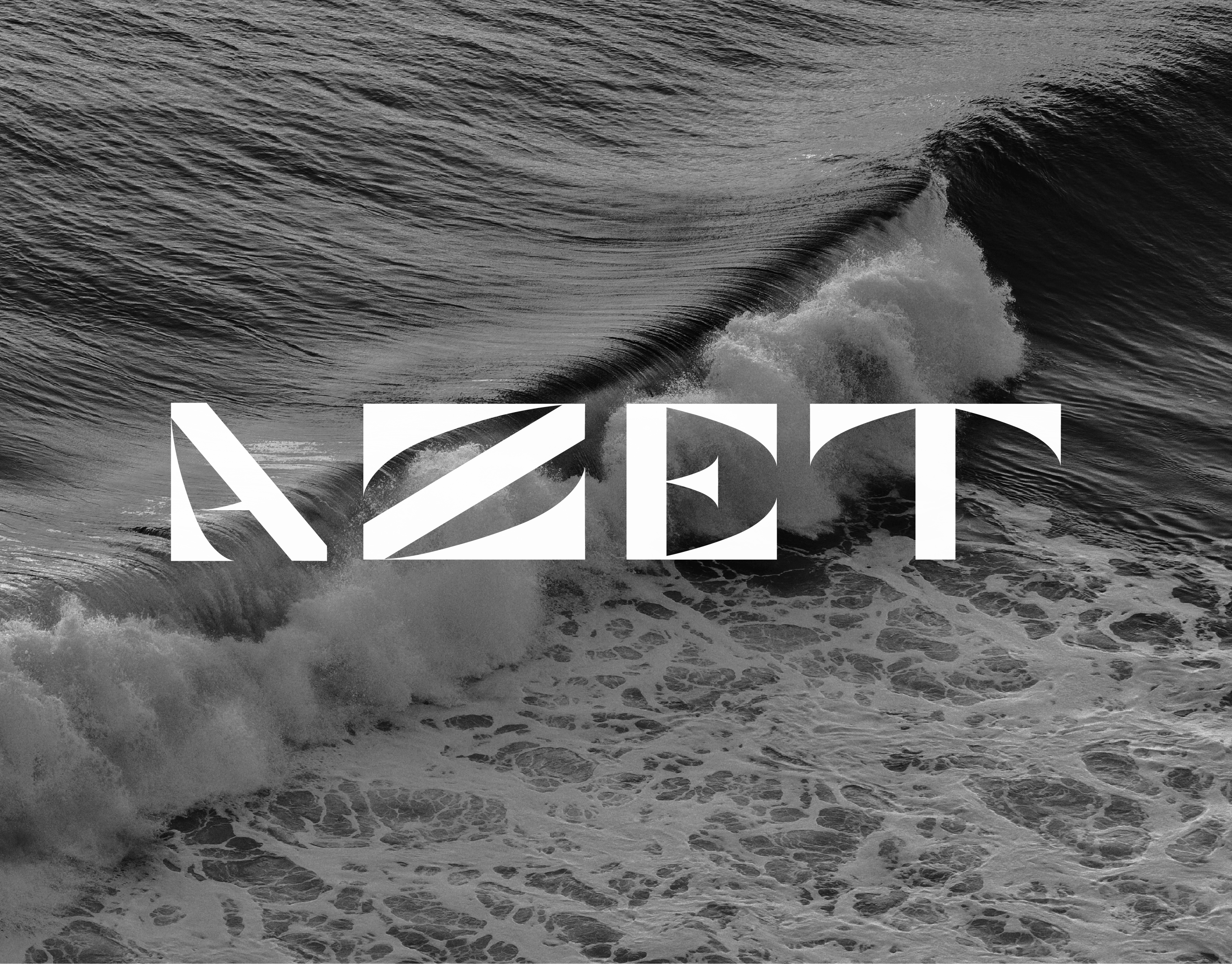VIETNAM'S ARCHITECTURAL CULTURE
The collection belongs to the SỢI MẮC SỢI MÀNH exhibition.
The collection consists of 12 paintings inspired by the beauty of Vietnamese cultural architecture. Vietnam is a country with 54 ethnic groups, therefore, this is also the land for many unique cultures, and one of the features of those cultures is the architecture. With this collection of paintings, I want to celebrate the beauty of that architectural heritage by putting them in surrealistic space.
Within this space, the ancient mouth-by-mouth folklores are formed, the distinctive cultural characteristics of those legacies are clearly revealed through the images of sky, clouds, rivers, seas, ... They bear a shared story, telling us about the colourful beauty of my home country, Vietnam.
Hopefully, you will enjoy them and come to Vietnam in the future to witness them by yourself.

HOÀNG
Meridian Gate – Imperial City - Hue
In the history of Vietnam in modern times, the construction of Kinh Thanh Hue is probably the largest in scale with thousands of people taking part in the construction and an enormous amount of rock and soil, with a large volume of work: digging giant trenches, river filling, emigration, tomb moving and citadel building... All the work lasted for 30 years under the two king’s reign.
Meridian Gate, is the largest of the four main gates of the Imperial City, and the second ring in the Imperial Capital. The two sides of the imperial city are Da Vien Islet and Hen Islet, representing “Azure Dragon of the West, White Tiger of the East”, or " Hidden Dragon - Crouching Tiger" to show respect for kingship. That is also the inspiration for “Hidden Dragon - Crouching Tiger” painting.
It can be said that Hue Citadel is a meticulous architectural work in every detail of design and feng shui aspects, and typical for the foundation and development of Nguyen Dynasty’s Art. The implication here is the desire to prosper, whether the country is peaceful or not, depends very much on the emperor.
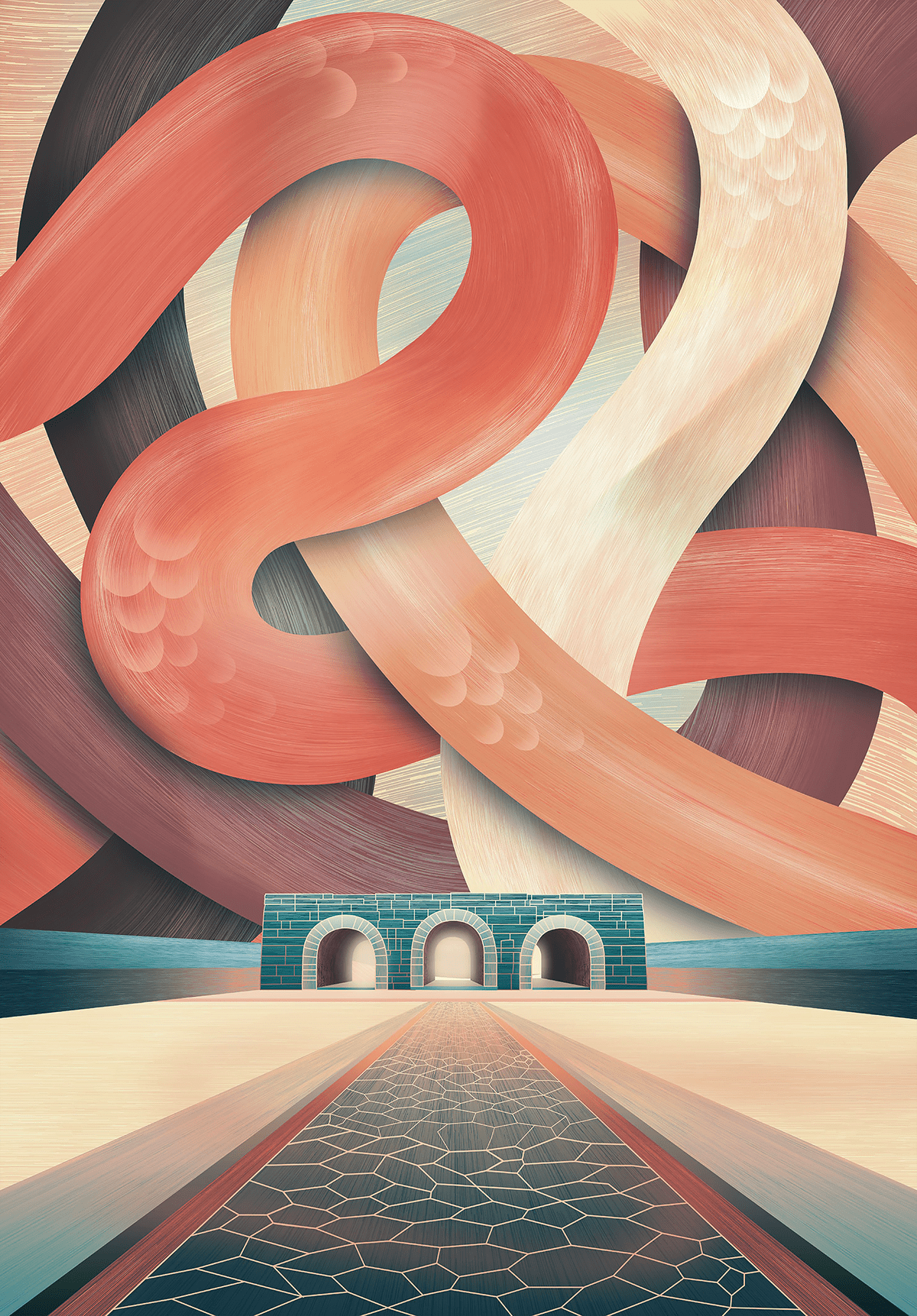
RỒNG CHẦU RẮN CUỐN
Ho Dynasty Citadel – Thanh Hoa
In the winter of November 1397, Ho Quy Ly forced of King Tran Thuan Tong moved the capital from Thang Long citadel to An Ton citadel (now belonging to Vinh Long commune, Thanh Hoa). This was the second capital of Dai Viet country at the end of Tran dynasty, called Tay Do. After the Ho Quy Ly acquired the throne and Ho Dynasty was established, the people still used to call it Ho Dynasty Citadel.
According to feng shui research, Ho Quy Ly believed that this land was “Dragon-Snake-Sixty years” sign, which means the " flanking dragon, curling snake" stance of the land - being stable as a pillar for 60 years. But on the other hand, according to Ho Han Thuong the second son, said that even though the land was in such stance but the land is still young, so it only was “Dragon-Snake moist land, six years prevail” , which means that the reign would exist less than 6 years only. Indeed, the Ho Dynasty only existed from 1400 to 1407.
The painting is not only described the decline of fate of the Ho Dynasty, but also in a different perspective. From then til now, dragons have always been a symbol of authority of the royal dynasty. Around this capital city is the Ma River, which is considered to be a vital point with many river branches pouring in. Each river branch is considered to be a part combined into a grand dragon. In terms of meaning or in natural element, it is really a land of true " flanking dragon, curling snake ", and the painting wants to show the power of a dangerous land and the durablity of this citadel.
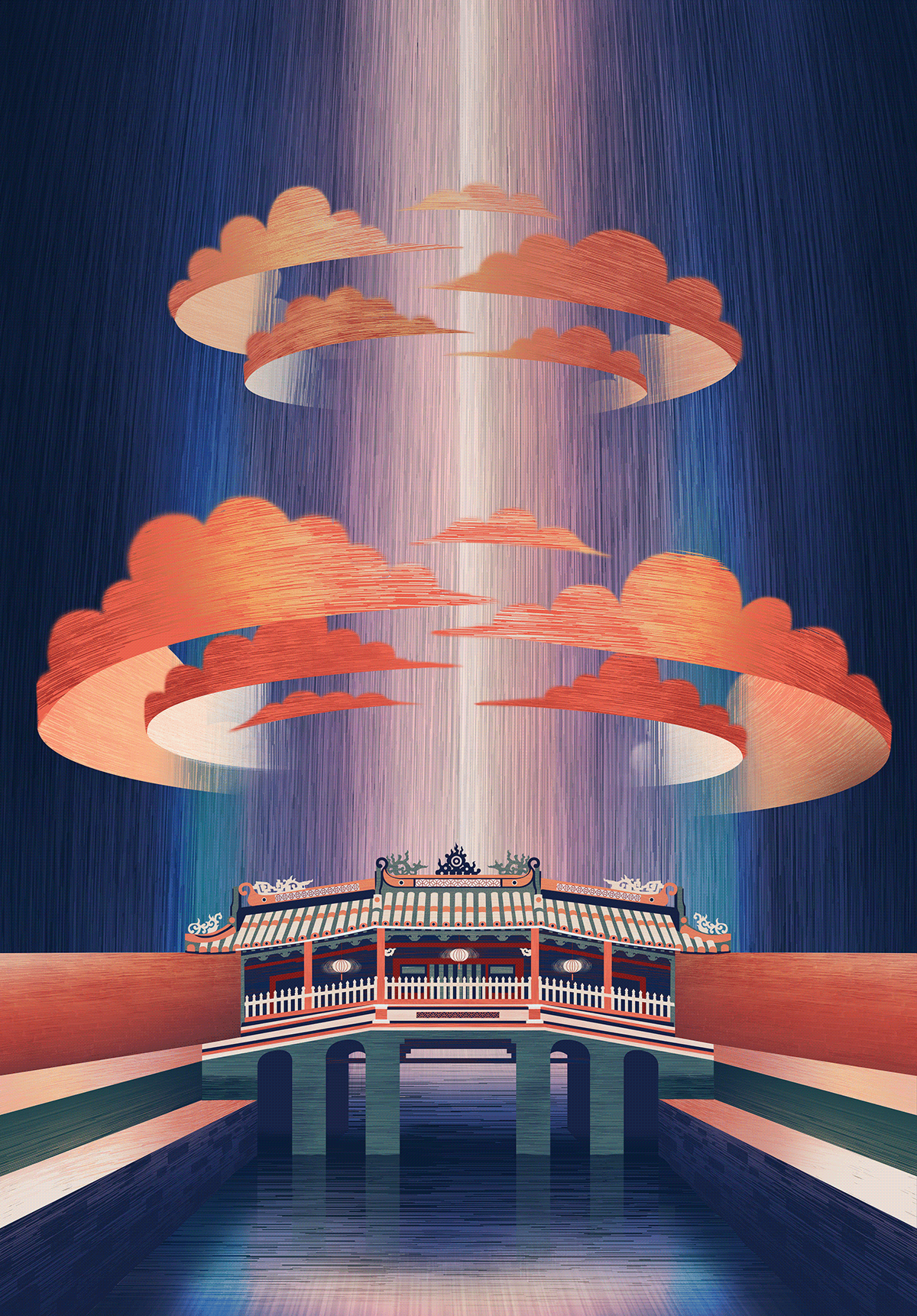
NAMAZU
Japanese Covered Bridge – Hoi An
In the ancient town of Hoi An, the Vietnamese, Japanese and Chinese communities shared a legend about the cause of earthquakes. They believed that in the ocean there is a sea monster that the Vietnamese call the “Con Cù”, the Japanese called it Namazu, the Chinese called “Cau Long”, its head in Japan, its tail in India and its back squeezing through Hoi An. According to Japanese mythology, Namazu is a giant catfish. Every time the monster moved, throwing himself, the earth shook, Japan suffered earthquakes and Hoi An was not stable and people could not do business and trade.
Japanese Bridge with the shape of a sword, was meant to cover the Hoai River, stabbing right in the spine of the monster, preventing it from throwing outrages - that's also the starting point for creating this paintings. Although of Japanese design and construction, it is heavily imbued Vietnamese architecture, clearly shown in the layers of yin and yang in the roof. The entire bridge is made of wood, painted and carved with many intricate motifs. On both sides of the bridge are two statues of a monkey and dog, the two guardian deities as in Japanese.
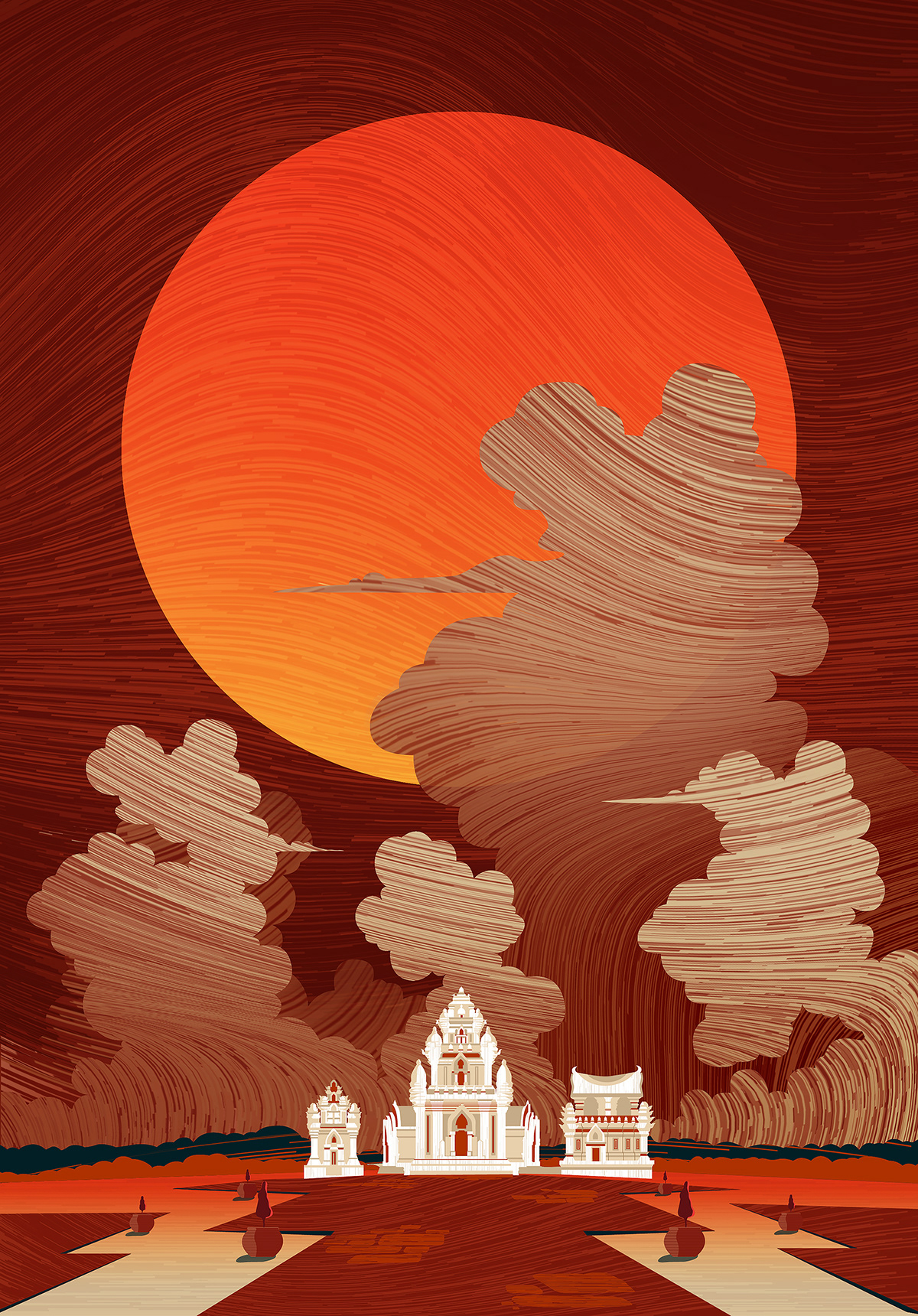
GỐM TRỜI
Cham Temple – Po Klong Garai Temple – Ninh Thuan
Along the Champa region, from North to South, till the Ninh Thuan, Binh Thuan area, which used to be called Pan-duranga, the Cham paley still live there, still maintain the culture, worship and call the tower by the names of the Gods: Po Rome, Po Tam, Po SahInu ... Among the towers named after the gods, Po Klong Garai is the most sacred and magnificent temple complex. In Cham language, Po means God, is Him, and The One Above. These temples are called kalan, meaning mausoleum. Kalan Po Klaong Girai is a mausoleum dedicated to Klong Garai, a mythical king.
The Cham people have left humankind with many valuable cultural heritages, typically the unique brick towers and sculptures. Brick is the main material to build these majestic towers. However, the adhesives, brick burning methods and tower construction techniques of the Cham people are all still a mystery.
Due to the hot and dry climate, in addition to agriculture, the Cham people in the South Central Coast strongly developed pottery and weaving. This painting is also inspired by those craft villages. The threads weave sceneries like the pottery material, burned by the sun, thus creating a unique indigenous culture.

NHƯ NGUYỆT
So Communal Temple - Ha Noi
This painting is inspired by the story from the Divine Lore of SoTemple: In the spring of the year of the Tiger (930), there were a man named Cao Hien and his wife La Thi A in Van Ky, Gia Dinh district, Thuan An town, Kinh Bac. They were a very poor household, living by fishing by river. The two enjoyed doing good deeds, even a small one. One day, the two fished on the Nhu Nguyet river, pulling 15 pieces of gold. Since then, the two had been doing business well, so their lives were very well-off. Unfortunately, both of them were over 50 years old and still had no children, so they looked for places to pray for. Heard of Huu Linh temple, Son Lo Ward, is where the prayers could be heard, the two went together to make offerings there. Early the next day, they performed a offering ceremony and got off the boat with two fellow fishermen down the Day river. While the boat was going, it suddenly darkened and a great wind came. At that time, the boat took them to Son Lo site, the two looked up to the sky to see a yellow cloud directed at the woman and lowered. She was panicked, and passed out, and then she became pregnant. In the second month of the year of the Snake (933), she gave birth to 3 sons and three children who grew up healthily following Dinh Tien Hoang to suppress the 12 warlords.
So communal temple was built in 1673 to worship The Three Great Generals, the three children of the aforementioned ancient legend. This is considered to be the most exemplary ancient communal temple, ranked first in Doai Region. There goes a folk saying "Magnificent as So Temple, Grand as Can Temple" is also because of that.
The painting is inspired by the architecture of So communal temple, in harmony with nature. So communal temple becomes even more solemn and majestic when night falls – when there are no people, leaving the space for the landscape and nature. The shadow of the moon above illuminates So temple, adding the beauty to this place, glowing a heroic history of the heroes of the country- founding period.

DUYÊN
Phuoc Duyen Tower - Pagoda of the Celestial Lady - Hue
Legend has it that when Lord Tien Nguyen Hoang once walked along the banks of the Perfume River upstream, he encountered a small hill rising near the clear blue water, the terrain there looked like a dragon turning to look back. A charming landscape, like nature had reserved to entertain this special guest. It turned out that the hill was named Ha Khe. People said that there was an old lady in red clothes, who often appeared on the hill and told people, "Then there will be a lord who will come to the temple to gather spiritual energy, stabilize the vein, and make the Nam country become almighty”.
It seems the destiny arranged, the great thought of Lord Nguyen Hoang has caught up with the people's wishes. In 1601, the temple was built and named Pagoda of the Celestial Lady, which implies a reminder of the old lady in the old stories.
The painting is based on the meditation of pagodas in Vietnam. The tower is placed on the water that curves around this picturesque land.
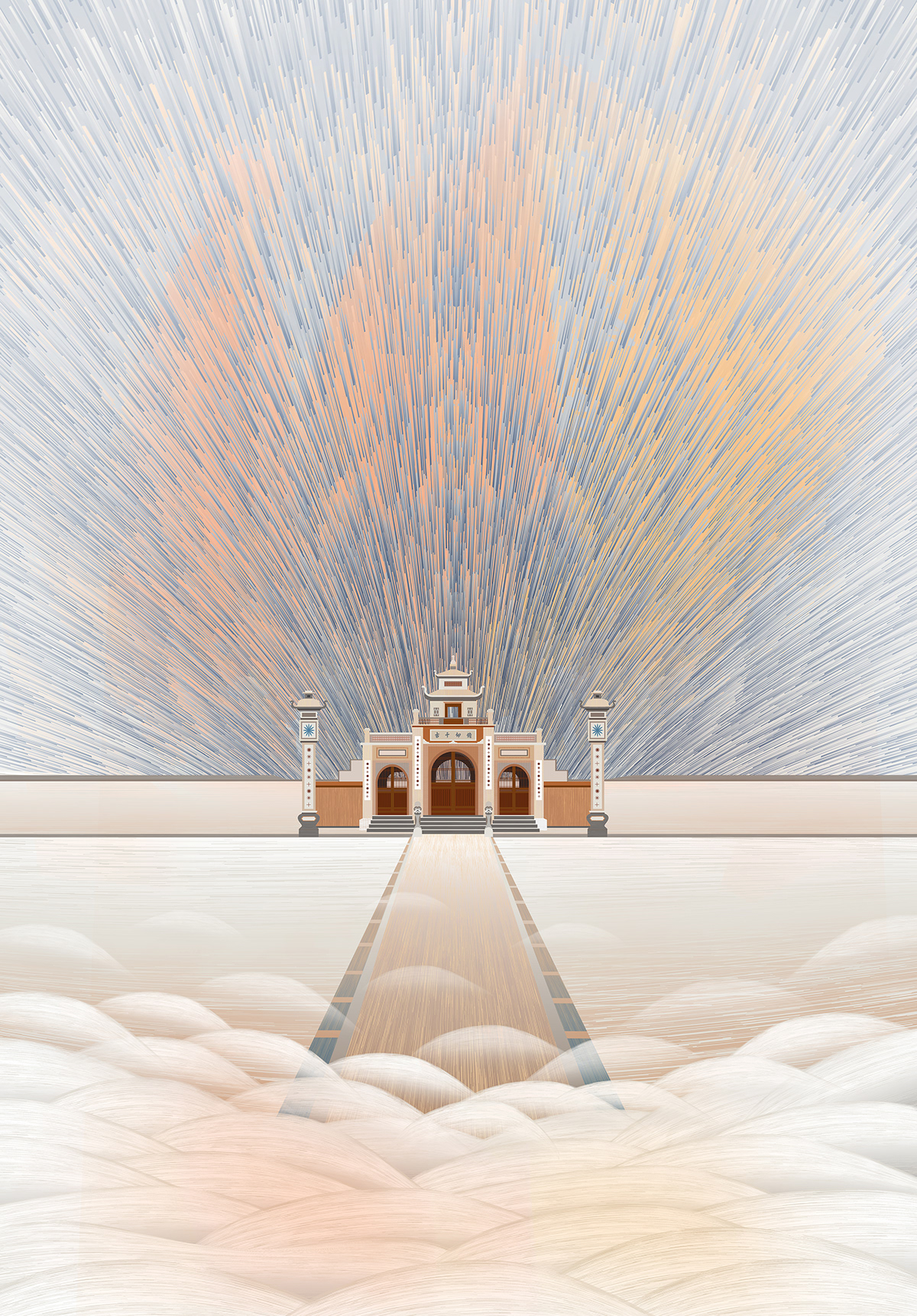
SON
Co Loa Citadel - Ha Noi
"There was a story of Princess Mi Chau
Her heart was put in the wrong place
And the magical crossbow was accidentally handed over the enemy
Thus the country’s fortune was in the deep sea."
(To Huu, Bai Tam Su, roughly translation)
Co Loa Citadel forever remains the same, the two streams of reality and legend have always paralel in the lifestyle of so many generations. The story of the magical crossbow, whether pointing at river or mountain or forest, would disintegrate or burn those objects. The story of the golden turtle appearing on the surface of the water helped the king build the citadel and gave its magic claw to create the magical crossbow. Along with that is the love story between My Chau and Trong Thuy that was equally outstanding.
From a more sentimental perspective, maybe Co Loa citadel was always associated with the story of Trong Thuy - My Chau with a sense of faithfulness from of the Vietnamese women. The painting SON wants to describe that angle of the story, the image of the goose feathers floating like clouds and the sky as thousands of flying arrows, all of that create a beauty that is both sharp and light.
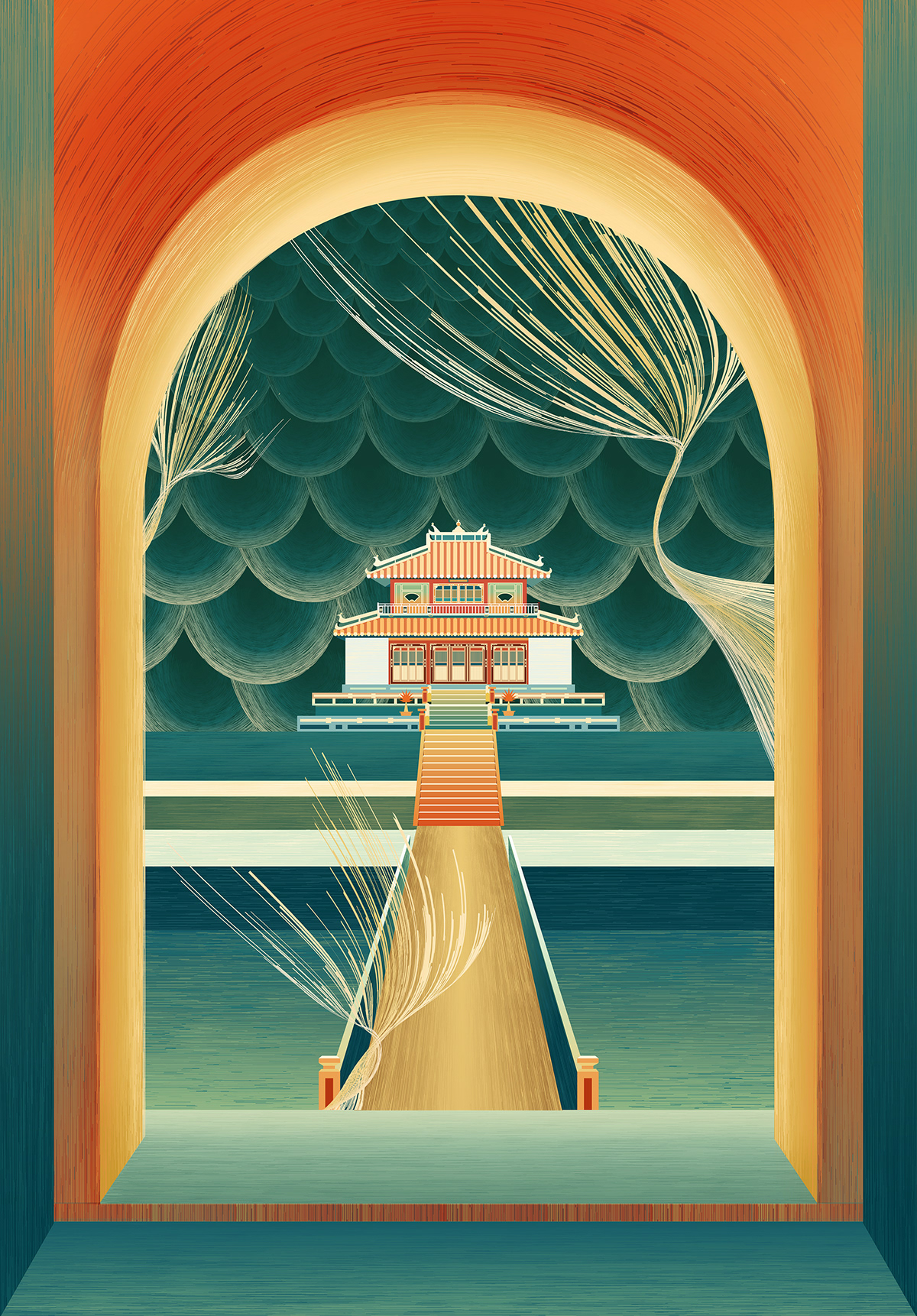
NGỌC
Pavilion Of Light – Minh Mang Tomb – Hue
“Pearls glitter on the gauze
Peace comes along when leaving the urban place.
Such pleasure of a hidden master.
Is to lie among the floating smoky cloud. ”
(Hoang Vu Ngoc Tuong, roughly translation)
Minh Mang was the fourth son of Gia Long King, ascended the throne in 1820, and was the second emperor of the Nguyen Dynasty. Although during the reign of Minh Mang, there was continuous internal rebelions and wars because of a number of erroneous policies, he was still considered an outstanding king to bring Dai Nam to the same level as other South East Asia countries at that time.
After being king for 7 years, Minh Mang wanted to build himself a place to be used for resting and for his burial. Pavilion of Light is located in the complex area of Minh Mang Tomb with 17-step stair of Thanh stone leading into a place of clear sky with many shady trees the cool blue sky of trees and fragrant smell of wild flowers.
The painting selects a gloomy perspective with a covered dome, in the middle there is a bright spot which is the Pavilion of Light. And in the back, there is a black and green dragon fabric showing a sense of oppressing and mourning but still managing to describe the majesty and greatness of a former king.
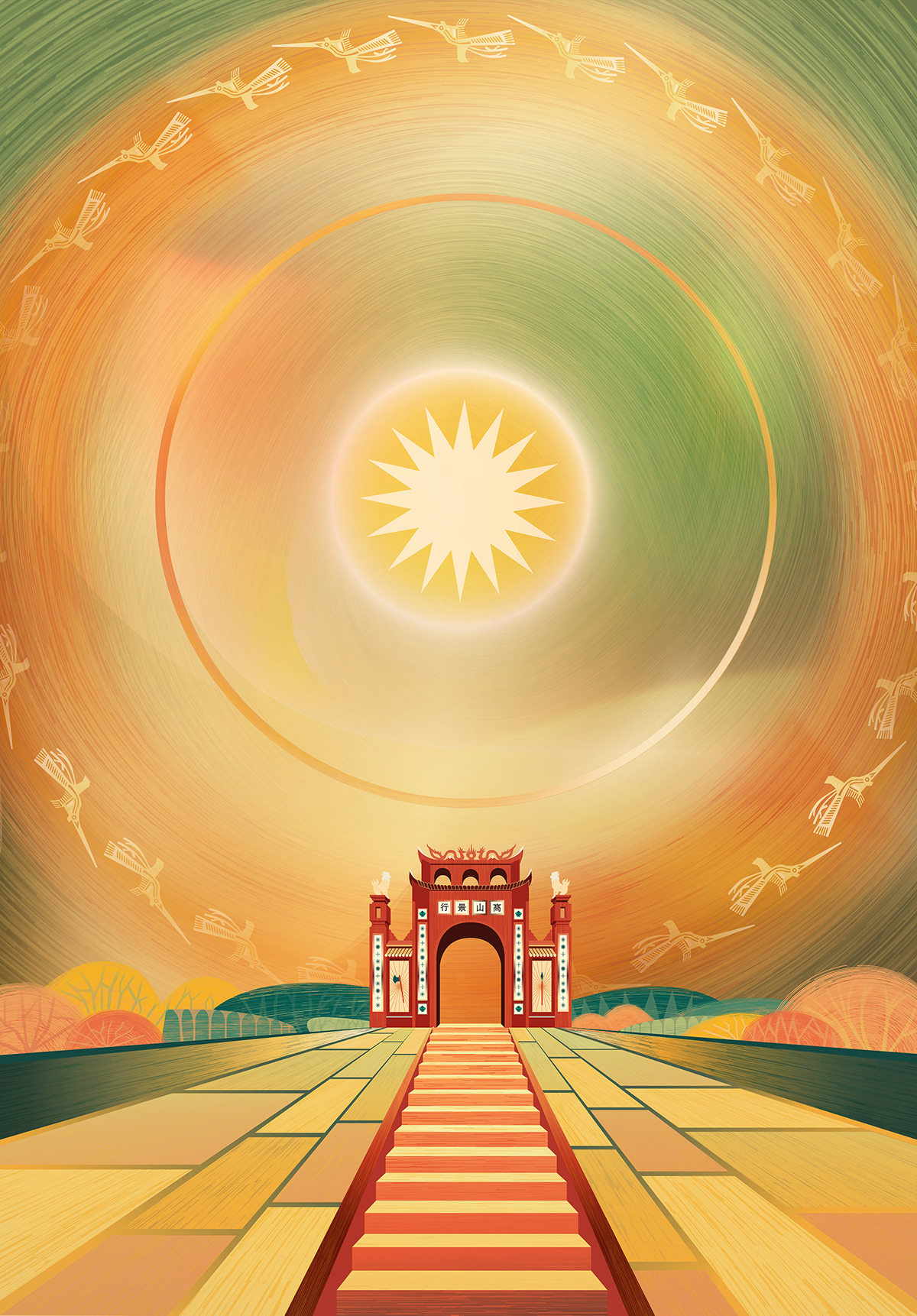
CAO SƠN CẢNH HÀNH
King Hung Temple Gate - Phu Tho
The painting shows the whole landscape of Hung Temple gate set in a brilliant space. Above is the light shining from the sun, an inspiration drawn from the Dong Son drum - a cultural symbol as well as a proof of the history of the legend of the Hung Kings.
The ground is smooth green field, representing the wet rice civilization, which is also the pride of the Vietnamese. For many centuries passed, people and rice were always strongly attached: each drop of the farmer’s sweat falls into the field, absorbed into the soil to produce the white rice seeds to nourish the people.
The sky with the pattern from bronze drum reflected the color of copper metal. Under the reign of Hung King, wet rice agriculture and bronze casting were the typical occupations of the culture at that time. That is also the main idea that the picture wants to describe.
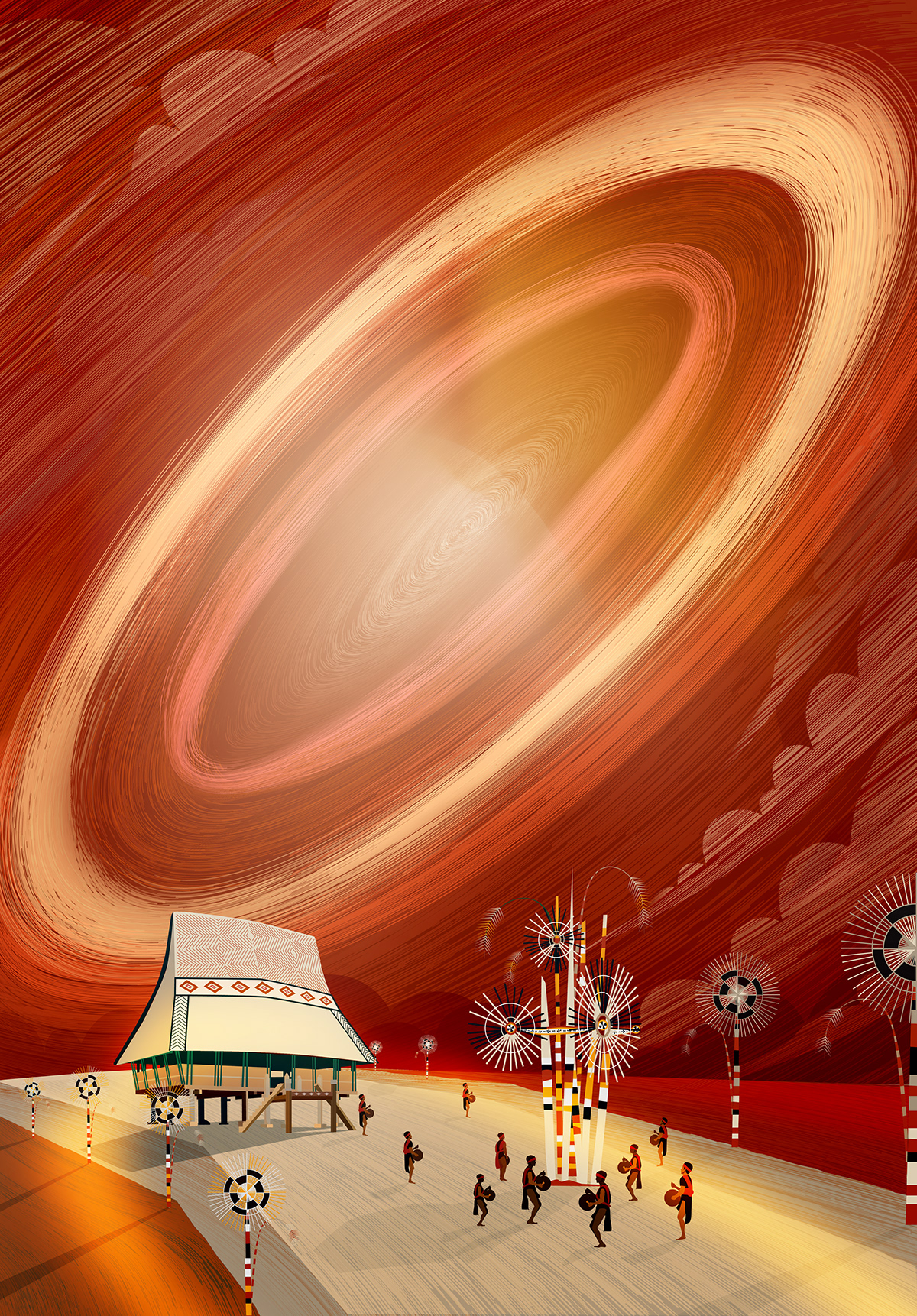
YÀNG
Rong Community Halls - Central Highland
To the J’rai and Bahnar people in the Central Highlands, the Rong community house is considered to be the soul of the village, the holy place of heaven and earth, the converging of mountains and rivers protect the villagers. Therefore, the ceremony of worshiping the Rong house is considered as one of the most important events here. In each communal house, there is a solemn place to worship objects considered by the people to be gods residing inside such as a knife, a stone, buffalo horn ... In addition, this place is like a museum to store traditional artifacts associated with the history of village such as gongs, drums, weapons, heads of sacrificed animals in ceremonies.
The Rong house is an invaluable asset always associated with the community of every village in the Central Highlands. The towering roof of the Rong house is the expression of the will and aspirations of the villagers who want to conquer and win against the fate and the harsh nature. Therefore, besides the physical value, the Rong house also contains a very stable spiritual cultural layer of the Central Highlands people. Rong house is not a residence house of the Central Highlands people. Although the structure and materials are similar to stilted houses (built of wood, bamboo, grass…), this communal house has unique and taller and wider architectural features. The long decorative strip along the roof of the communal house is a distinctive point that stilt houses do not have. The taller and wider the Rong house is, the more it shows the wealth, prosperity,and power of the village. The tall and ravishing communal house stands prominently in the middle of the village, which also is the village's headquarters, where the village elders meet to discuss all the affair of the community, the meeting of the villagers, unmarried and widow men sleep at night, where the community custom rituals are conducted and also a place for guests outside the village.
In the culture of all ethnic groups in the Central Highlands, all community activities accompany with an image of circle. From the buffalo-slaughting festivals, gods offering ceremonies, praying for a better crops, daily activities ... to the feature images in the gong culture, there always is the use of circles. This painting is inspired by those circles. The Rong house under the clouds lights up the luster color and creates the impact, beauty and durablity of the culture of the Central Highlands ethnic groups.

QUY
Turtle Tower - Ho Guom - Ha Noi
When mentioning Hanoi, Sword Lake, it is impossible not to talk about Turtle Tower - the symbol of the thousand-year civilization of the capital. The architecture of this building is small, but what is hidden in it is the historical significance, timeless vestige that no place can replace. The tower combines European architectural style with rows of gothic curling doors of two level below but the curved roof holds the Vietnamese architectural style.
Turtle Tower is located in the heart of Hoan Kiem Lake, is a natural freshwater lake located in the center of Hanoi city. The lake has an area of about 12 hectares. According to legend, there was a time when King Le Loi roamed on a boat, suddenly a golden turtle emerged to the surface of the water demanding that the king return the sword that the Dragon King lent to Le Loi to drive away the invading Minh army. The king immediately returned the sword to the magic turtle and the diving turtle disappeared. From there the lake was named Hoan Kiem Lake. The name of the lake was also given to a central district of Hanoi (Hoan Kiem district) and is the only lake of this district to this day.
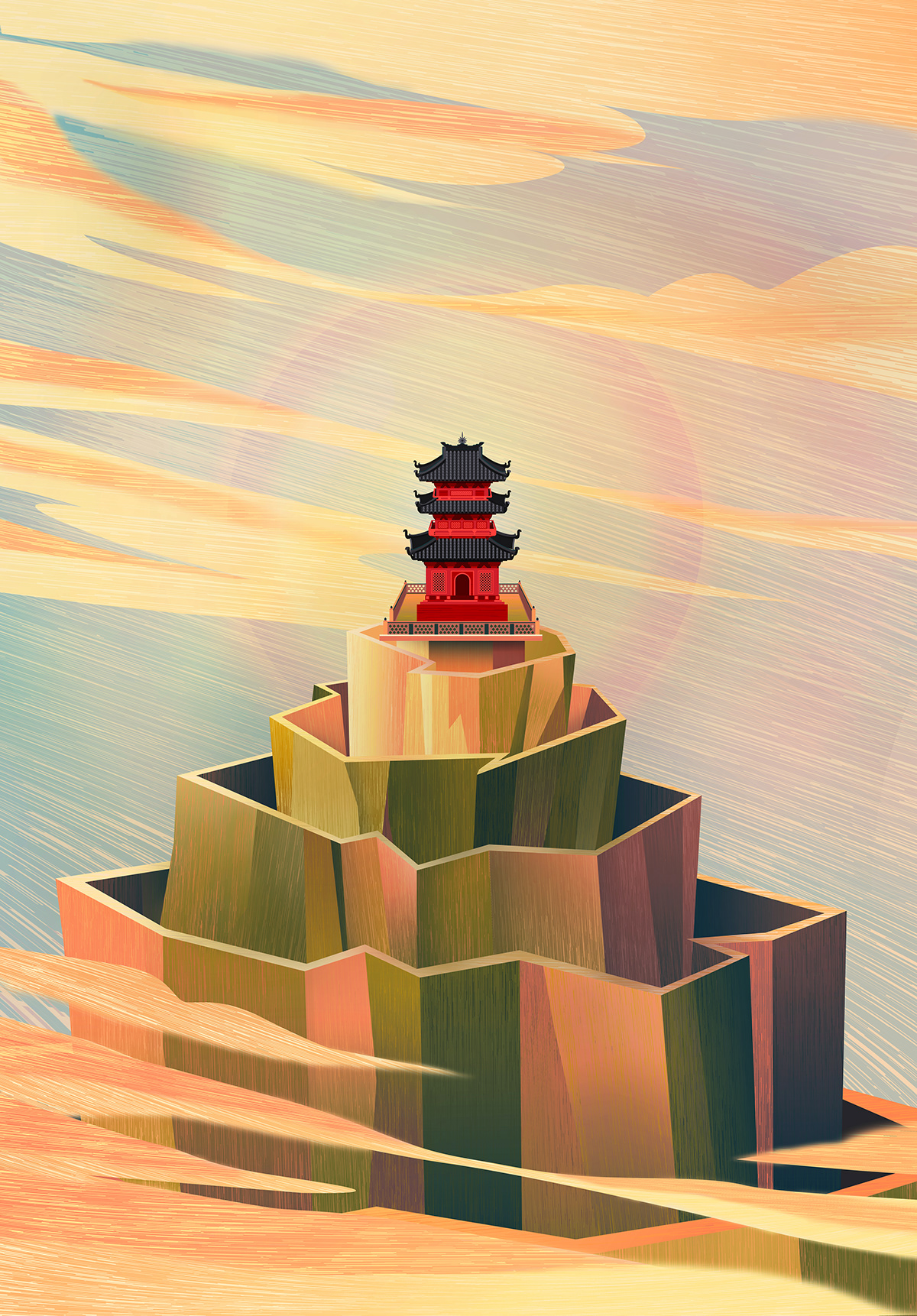
SAO
Pearl Pagoda - Ha Nam
Tam Chuc pagoda was built in the Dinh dynasty, associated with the legend of "Six bells in front - Seven stars behind". Accordingly, on the ninty-nine-mountain range in the southwest of Huong Pagoda, there are seven mountains near Tam Chuc village. The old legend recounts all seven mountains appearing with big bright spots like seven stars, all day and night. The shimmer from above shone on a large area. The people there called it the “Seven Stars” Mountain and thus the nearby "Seven Stars" pagoda. After that, some people came to “Seven Stars” mountain to chisel, in order to take away those seven strange “stars”. They collected firewood in large piles and burned for many days, causing four stars to fade away their light, leaving only three stars in the end, so the "Seven Star" pagoda was later changed to "Three Stars" pagoda.
On the main axis of Tam Chuc Pagoda stands prominently Pearl Pagoda, located on the top of Seven Stars mountain.It was constructed of 2,000 tons of stone without cement. The construction is affected from the style of Vietnamese traditional pagoda, and was manufactured and transported to assemble by Indian artisans from India. The surrounding landscape is majestic and mesmerizing nonetheless.
In the midst of that majestic natural space, Pearl Pagoda emerges as a bright star in the midst of the heaven and earth gathering, the people and the harmonious landscape become one, such a sacred and pure place. It is such a heavenly place on earth. The pagoda is like a heave altar to thank the favors that nature has given to people.
PUBLICATIONS
These publications are produced to bring to life.







ABOUT SỢI MẮC SỢI MÀNH EXHIBITION
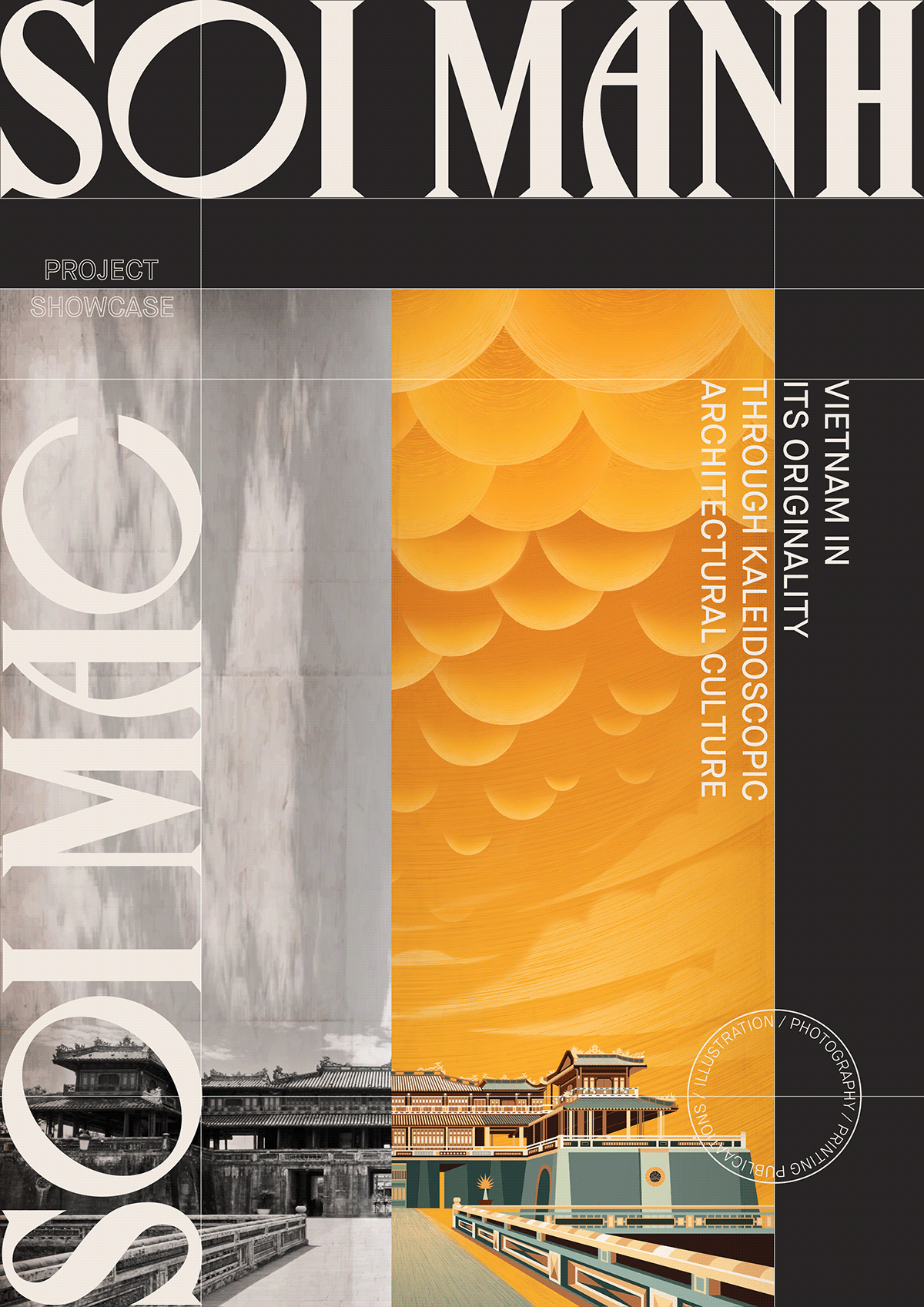
Warp and weft are two types of yarn used to weave cloth in Vietnamese looms. The warp yarns are attached vertically and the weft is threaded into the shuttle and woven horizontally on the loom.
From these two types of yarns, heavily imbued with Vietnamese culture, I come up with an interesting metaphor: Warp yarns are thought as the wonders of nature, heaven and earth- the vertical expansion of space. The weft is led by the shuttle across the warp to form intersections that contribute to the creation of complete fabrics - a metaphorical image for the heritage created by mankind as they grow horizontally of the surface of the earth.


The paintings are displayed in exhibition space.



Publication area in the exhibition



INSPIRATION
The paintings were painted based on the actual structure of Vietnamese cultural heritages in reality combined with the surreal sky. That sky explains a part of the formation story, the cultural characteristics of that work. Use images from silk fiber materials of Vietnam to create a whole with bold details. The layout is oriented - the sky is wide and the horizontal section occupies a lower proportion, creating a grandiose atmosphere and showing a harmony between heritage and nature.












Thanks for your watching!
